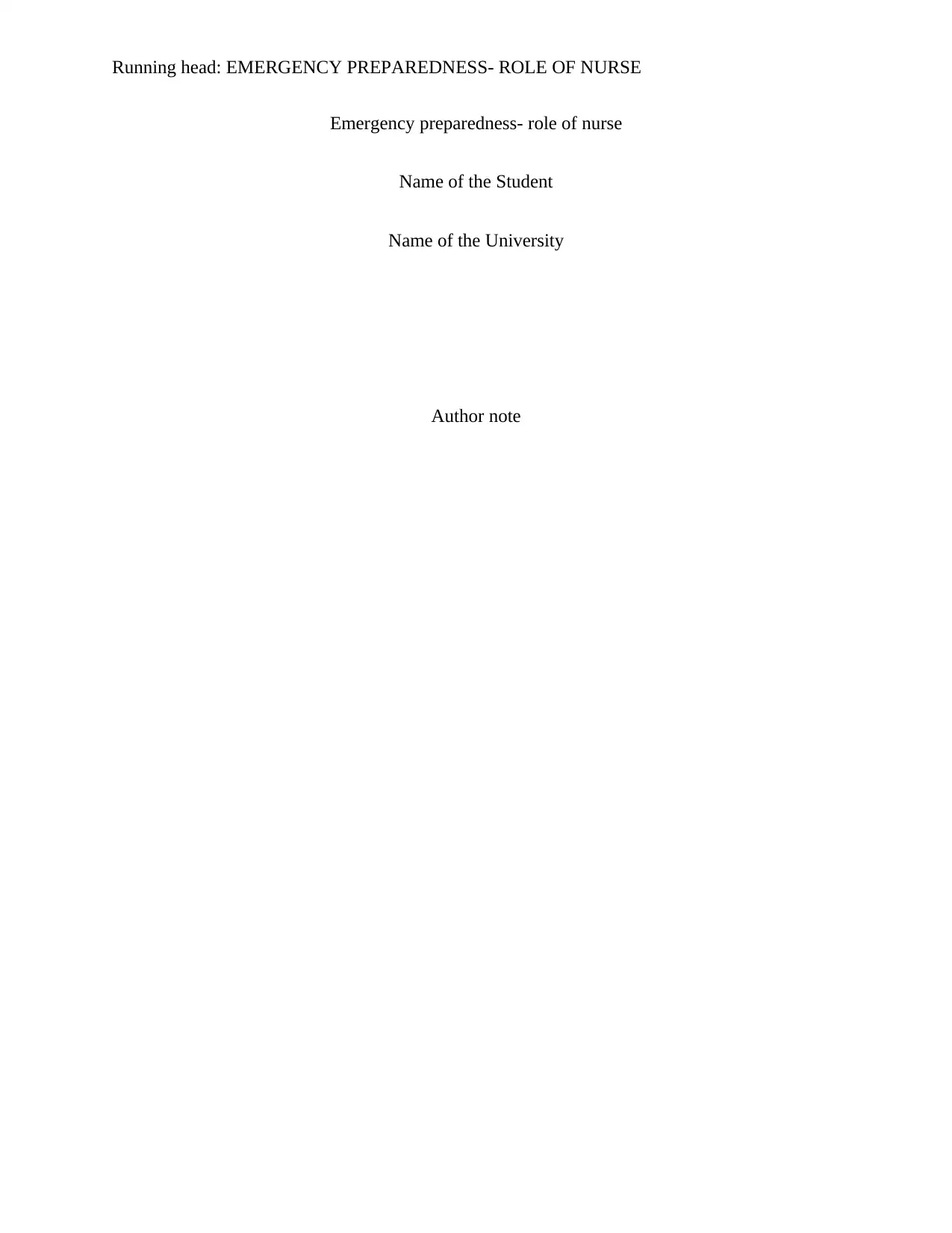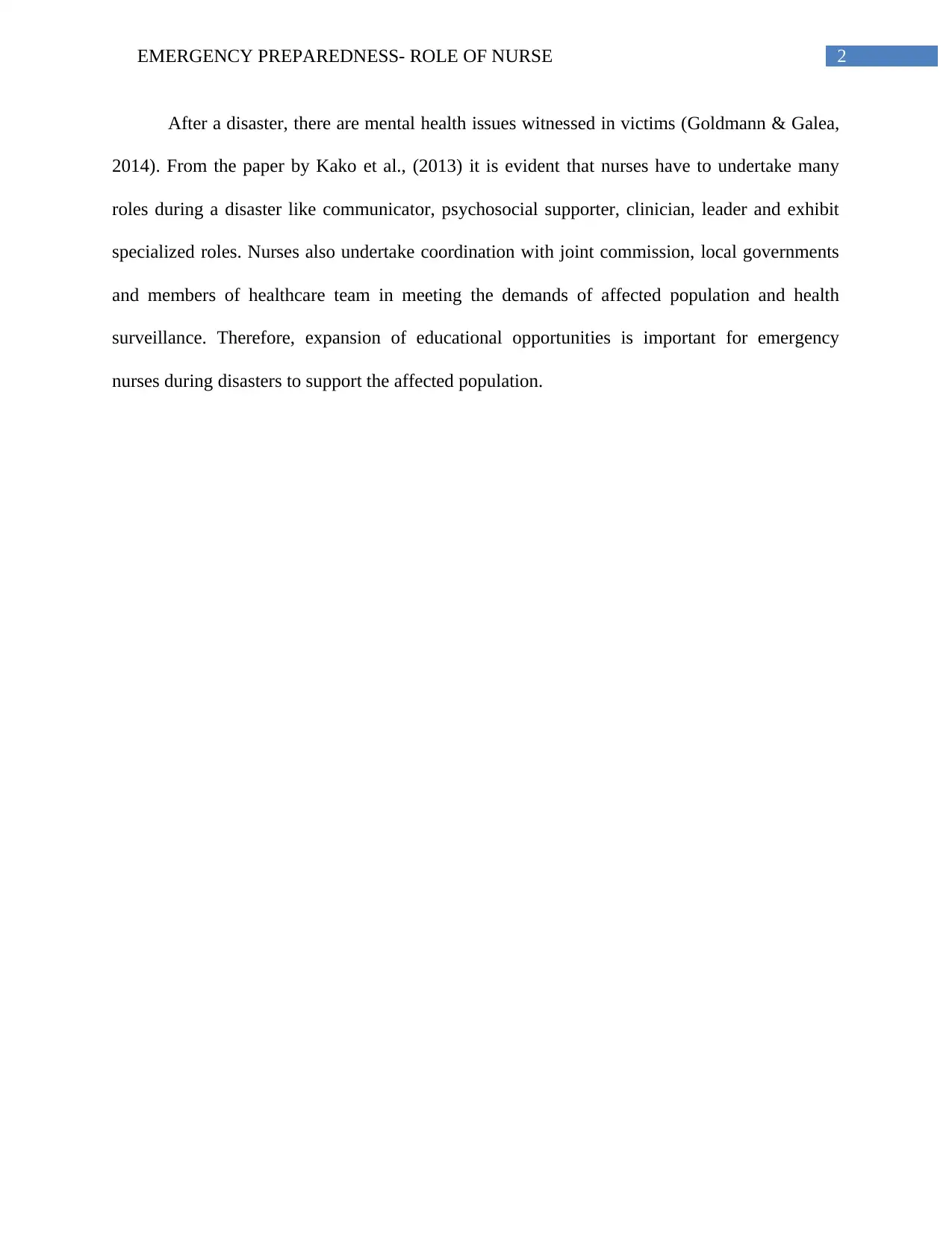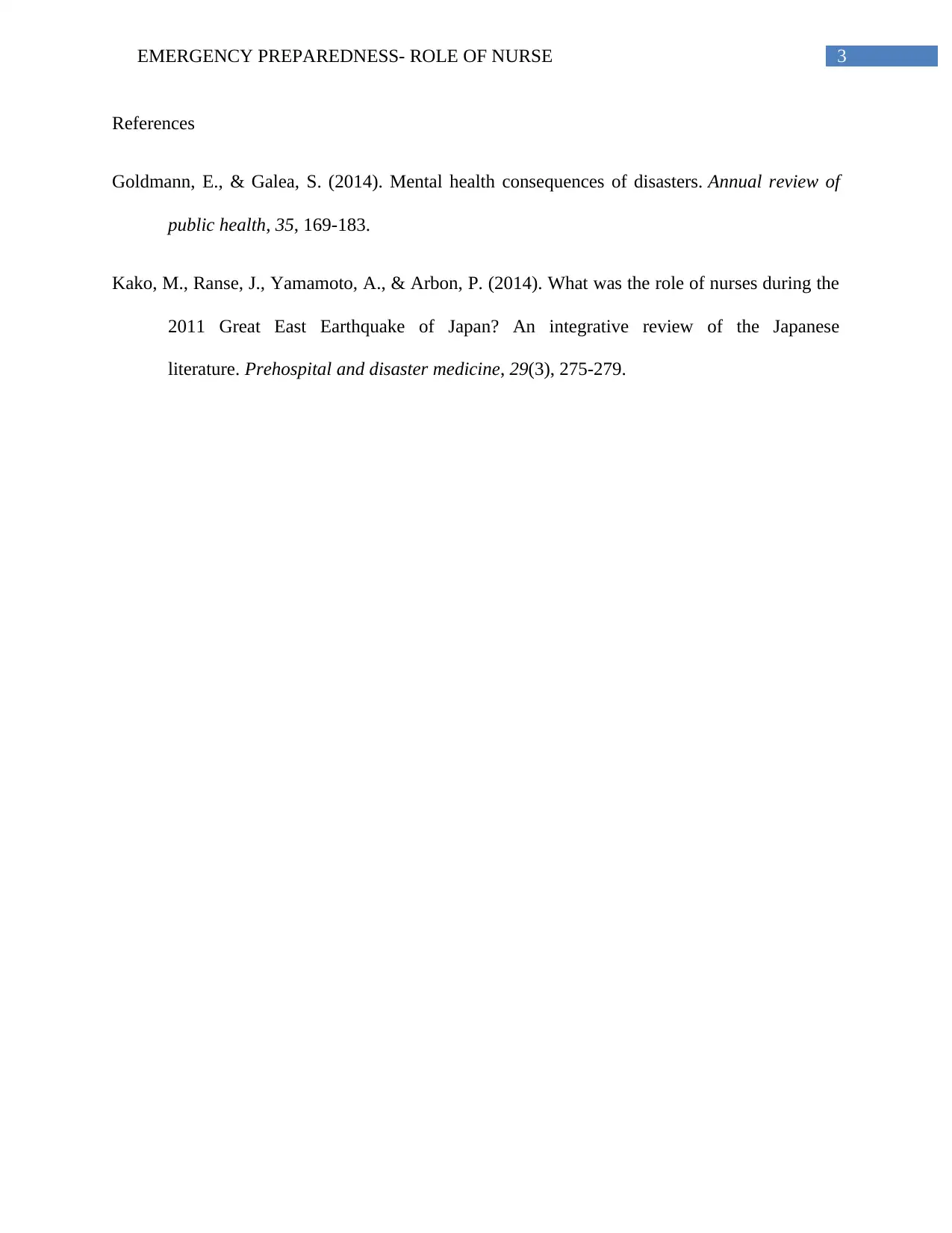Emergency Preparedness: Role of Nurses in Disaster Management
VerifiedAdded on 2021/04/17
|4
|532
|93
Report
AI Summary
This report examines the crucial role of nurses in emergency preparedness and disaster management, drawing from a literature review including the impact of the 2011 Great East Earthquake of Japan. Nurses are essential in all phases of a disaster, from pre-disaster planning and response to post-disaster recovery. During the first phase, nurses coordinate care and communication, while in the second phase, they participate in emergency operations and search and rescue. In the aftermath, nurses provide psychosocial support and mental health counseling. The report emphasizes the need for nurses to be flexible, adaptable, and effective communicators, often taking on leadership roles and collaborating with healthcare teams, local governments and community members. The report also stresses the importance of expanded educational opportunities for emergency nurses to better support affected populations and the need for mental health support for victims, as well as the importance of nurses as clinicians, leaders, and psychosocial supporters.
1 out of 4







![[object Object]](/_next/static/media/star-bottom.7253800d.svg)